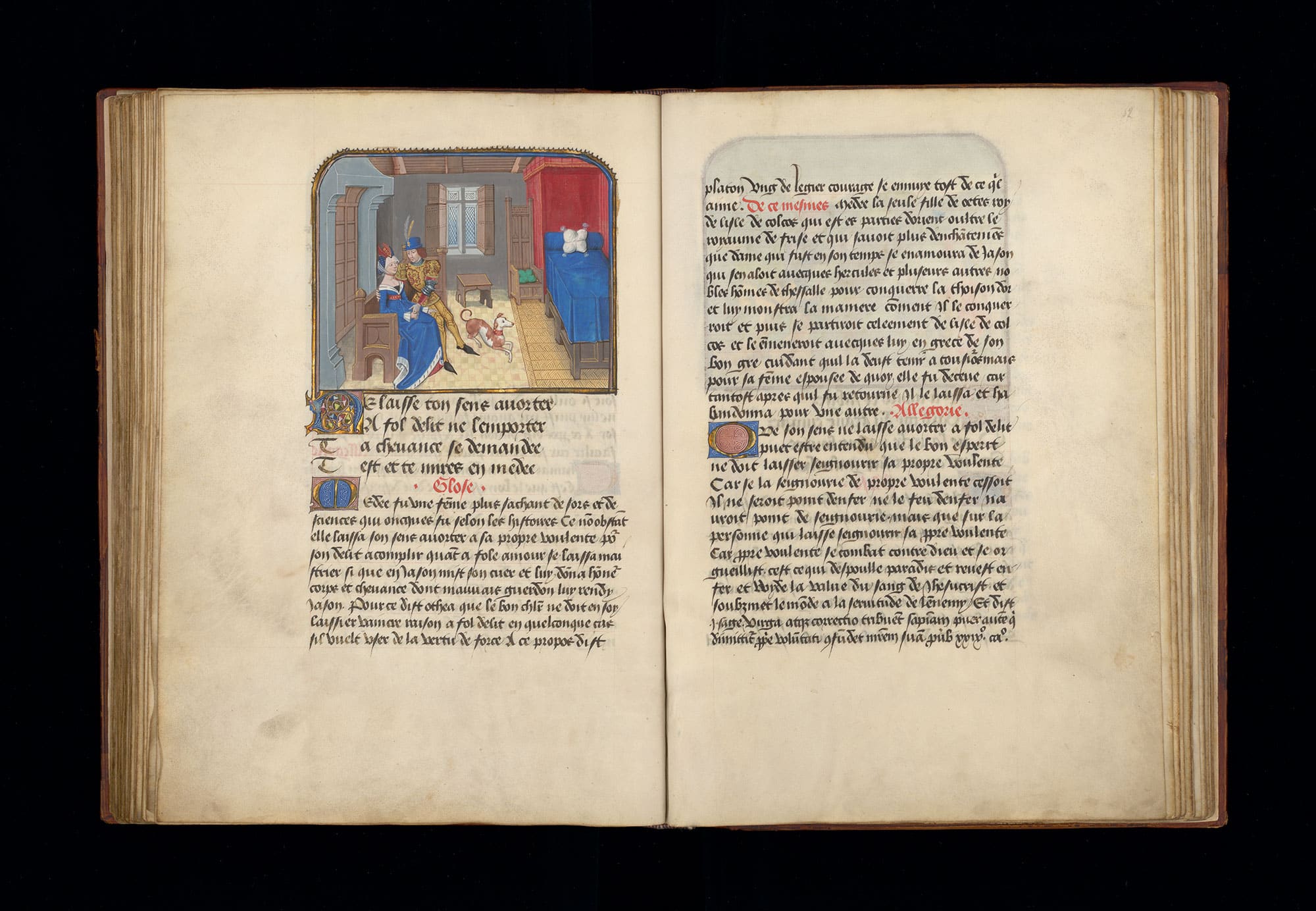Belgium has been hiding a treasure for 600 years
Six centuries ago, Brussels belonged to the rich and powerful Dukes of Burgundy. Skilled politicians and cultured patrons, they established a stirring treasure: a unique and fascinating collection of manuscripts.
These masterpieces, which have survived the ravages of time and history, have been looked aft er by KBR and can now be admired at the KBR museum.
Get to know the museum by reading a series of fascinating facts and discover the knowledge that the Library of the Dukes of Burgundy has to offer.
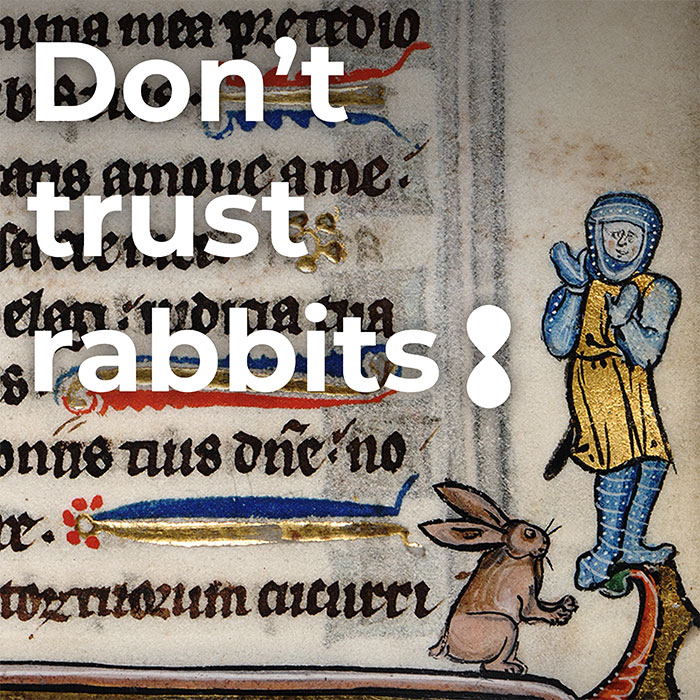
Don’t trust rabbits
Animals are ubiquitous in the Dukes of Burgundy’s manuscripts. Rabbits, however, did not have a reputation for innocence and tenderness in the Middle Ages. They were known as riotous and lascivious animals, which it was best to be careful of.
Be careful!
History books lie
The dukes’ books mainly tell “the truth of the dukes”. They present themselves as the distant relatives of great heroes and as legitimate heirs to areas that they acquired through military operations. In some “history books”, knights are even depicted fighting dragons.
Truth or fiction?
The Middle Ages will make you die of laughter
Although medieval society was deeply infused with religion, the Middle Ages generally seem to be far funnier in the manuscripts than we might imagine. The iconography in the marginalia of 15th-century books is full of satirical jokes.
Laugh along
One book kills 50 sheep
Medieval manuscripts are generally written on parchment, i.e. on animal skin. Parchment was made from goat’s, sheep’s or calf’s skin. The number of skins needed for one manuscript depends on the size and type of book, but an entire flock or herd was needed for almost every manuscript.
Follow the herd
Religion is everywhere
Religion made its mark on medieval society. It is noticeable in all forms of art, in different ways. The religion of the elite was infused with mysticism, but running parallel to this was a religion characterised by the cult of saints and popular legends.
Hallelujah, tell me more
The best of the Flemish Primitives can be found in books
The Dukes of Burgundy called upon the greatest artists of their time. Today, everyone knows Jan van Eyck, but the miniaturists who illustrated books were certainly in the same league. Some people argue that the most beautiful paintings by the Flemish Primitives may well be those that we encounter in the manuscripts.
Dive into these books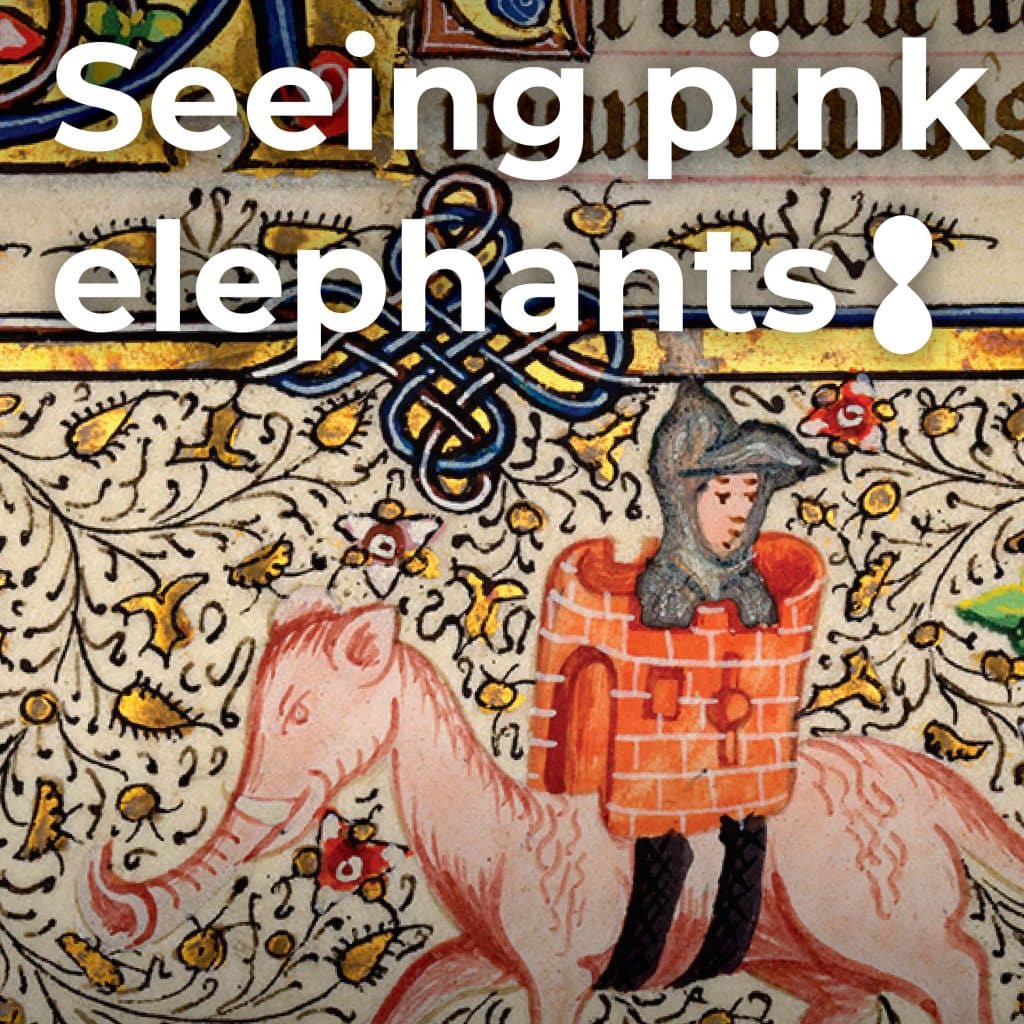
Seeing pink elephants
The world of medieval imagination was filled with wondrous beasts. Anthropomorphic animals and hybrid creatives inhabit the margins of manuscripts, cheerfully poking fun at the established order. Miniatures depict peculiar monsters from distant lands, representing dreams about the unknown.
Let’s spot elephants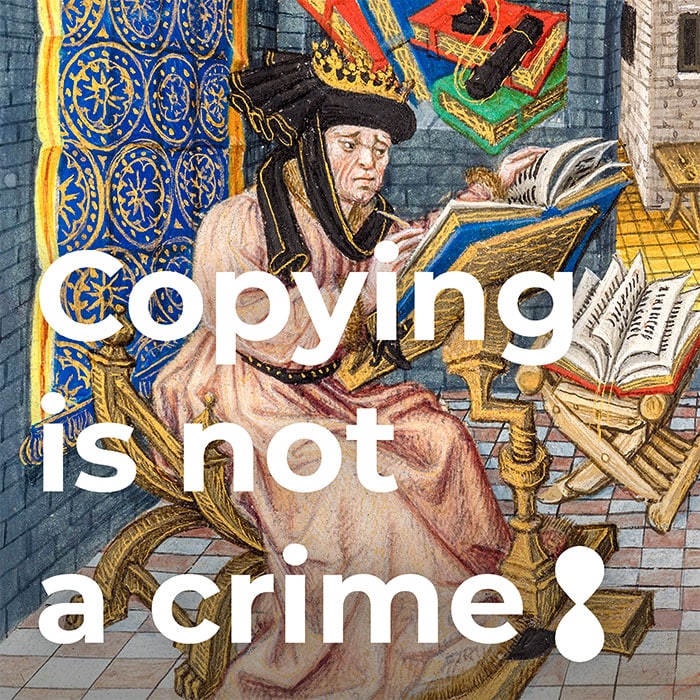
Copying is not a crime
Until the invention of printing, copying was the only way to reproduce texts. Thousands of men and women copied the texts of manuscripts in the Middle Ages. In the 15th century, copying was necessary in order to distribute texts, and so by no means a crime.
Copy that
Brussels is in Burgundy
At the end of the Middle Ages, the territory of present-day Belgium was divided into several political entities. The Dukes of Burgundy extended their power over these territories from the beginning of the 15th century. Around six hundred years ago, they ruled over Brussels.
Travel to Burgundy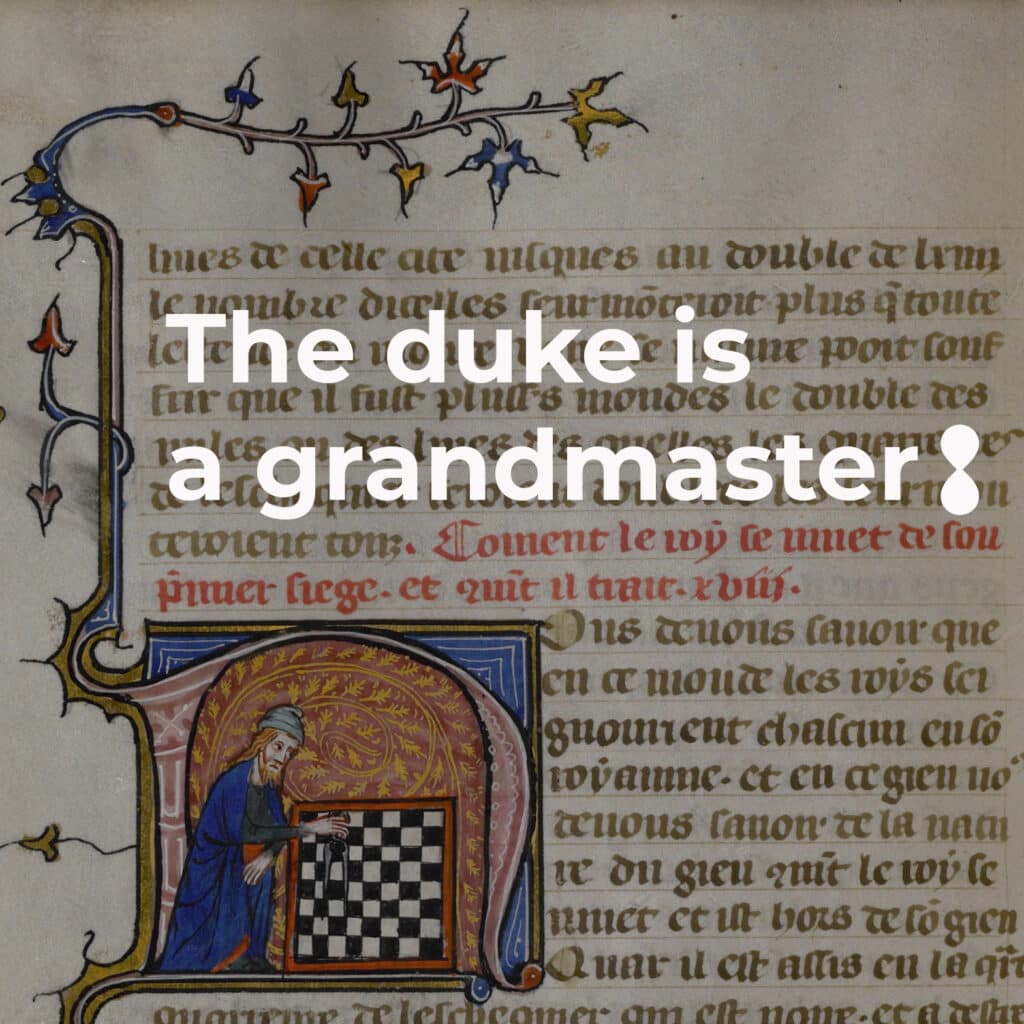
The duke is a grandmaster
Although we cannot say for sure that Duke Philip the Good did play chess, he had a handbook on the game in his library. Did he draw political inspiration from chess?
Checkmate!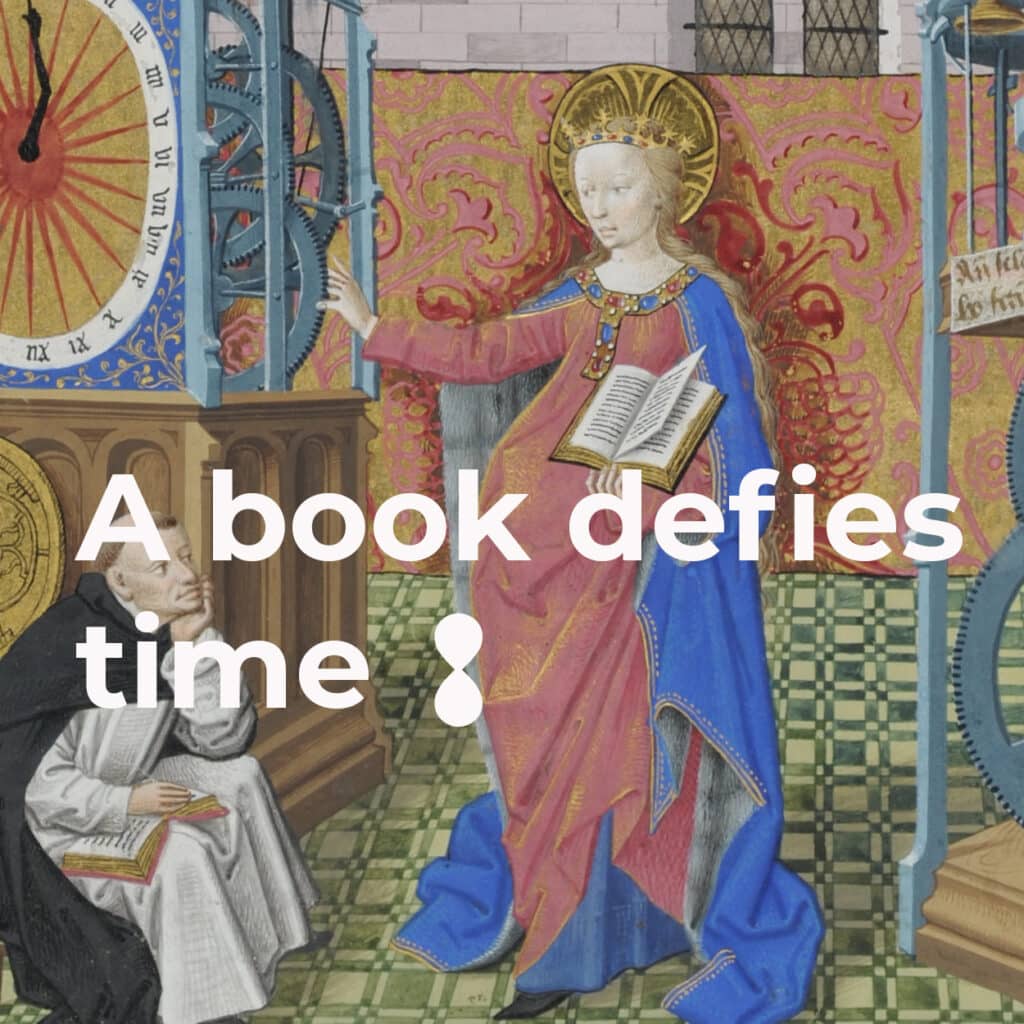
A book defies time
The manuscripts from the Library of the Dukes of Burgundy are little time machines: they give us a unique insight into the 15th century and the worldview of their owners.
Travel through time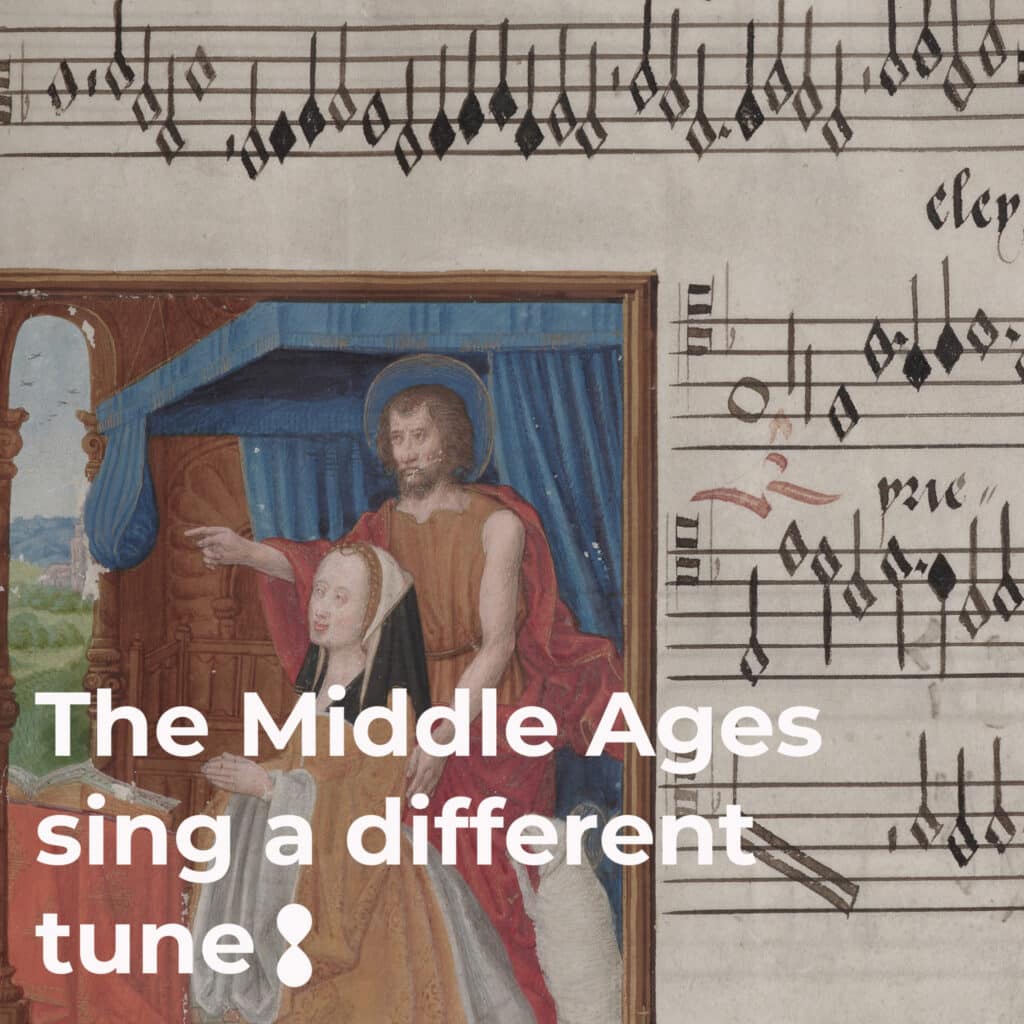
The Middle Ages sing a different tune
The Southern Netherlands set the tone in the musical landscape of the 15th century, with the Franco-Flemish polyphony as export product par excellence. The Dukes of Burgundy knew to appreciate music existing of multiple voices.
Hear the 15th century